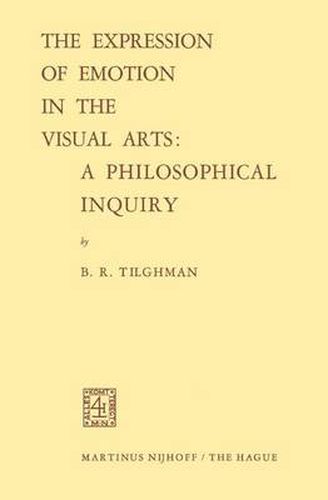Readings Newsletter
Become a Readings Member to make your shopping experience even easier.
Sign in or sign up for free!
You’re not far away from qualifying for FREE standard shipping within Australia
You’ve qualified for FREE standard shipping within Australia
The cart is loading…






This title is printed to order. This book may have been self-published. If so, we cannot guarantee the quality of the content. In the main most books will have gone through the editing process however some may not. We therefore suggest that you be aware of this before ordering this book. If in doubt check either the author or publisher’s details as we are unable to accept any returns unless they are faulty. Please contact us if you have any questions.
The philosophy of art, aesthetics, is here understood to be something distinct from both art appreciation and art criticism. The philosophy of art is never theless dependent upon the existence of appreciation and criticism because it is out of reflection upon these that the uniquely philosophical problems of art arise, problems that reflect puzzlement about what is involved in under standing, enjoying, describing, and evaluating works of art. Hence the philo sophy of art must presuppose at least some measure of understanding and appreciation of particular works of art and if such understanding and appre ciation are lacking the philosopher is in no position to supply them. It can not be a philosophical task to undertake a Defense of Poesie against either the philistine or the tyrant. The philosopher is not the one to convince us that art is a Good Thing, that paintings are worth looking at, poems worth reading, and music worth listening to, if for no other reason than that philo sophical theory and argument are no substitute for taste and sensibility. My position here is the now unexceptional one that philosophical problems are essentially conceptual problems and while the philosopher of art cannot produce aesthetic sensibility and appreciation where these do not exist, he can give us understanding of the concepts relevant to artistic appreciation and thereby help us to see our way through the conceptual confusions that have generated the philosophical puzzles surrounding art, its appreciation and criticism.
$9.00 standard shipping within Australia
FREE standard shipping within Australia for orders over $100.00
Express & International shipping calculated at checkout
This title is printed to order. This book may have been self-published. If so, we cannot guarantee the quality of the content. In the main most books will have gone through the editing process however some may not. We therefore suggest that you be aware of this before ordering this book. If in doubt check either the author or publisher’s details as we are unable to accept any returns unless they are faulty. Please contact us if you have any questions.
The philosophy of art, aesthetics, is here understood to be something distinct from both art appreciation and art criticism. The philosophy of art is never theless dependent upon the existence of appreciation and criticism because it is out of reflection upon these that the uniquely philosophical problems of art arise, problems that reflect puzzlement about what is involved in under standing, enjoying, describing, and evaluating works of art. Hence the philo sophy of art must presuppose at least some measure of understanding and appreciation of particular works of art and if such understanding and appre ciation are lacking the philosopher is in no position to supply them. It can not be a philosophical task to undertake a Defense of Poesie against either the philistine or the tyrant. The philosopher is not the one to convince us that art is a Good Thing, that paintings are worth looking at, poems worth reading, and music worth listening to, if for no other reason than that philo sophical theory and argument are no substitute for taste and sensibility. My position here is the now unexceptional one that philosophical problems are essentially conceptual problems and while the philosopher of art cannot produce aesthetic sensibility and appreciation where these do not exist, he can give us understanding of the concepts relevant to artistic appreciation and thereby help us to see our way through the conceptual confusions that have generated the philosophical puzzles surrounding art, its appreciation and criticism.